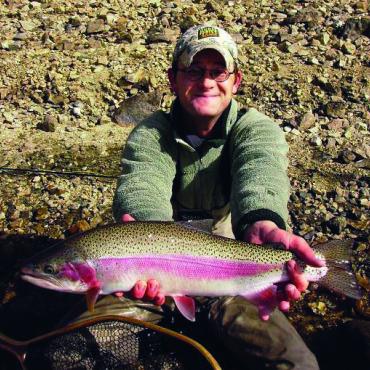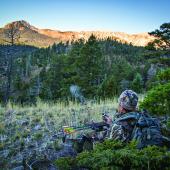Field of Dreams
Stalking through distinctly region-3 terrain.
Because Montana is such a big state, Montana Fish, Wildlife & Parks has divided the hunting and fishing areas into seven regions. Covering what amounts to the entire southwestern corner of the state, Region 3 is one of the most diverse regions habitat-wise. River-bottom riparian zones, agricultural fields, prairie grasslands, sagebrush flats, and alpine habitat are all well-represented in Region 3.
However, what sets Region 3 apart from other hunting areas is the rich and diverse lowland, riparian, and prairie/farmland areas. It’s common to find game that shelter in the harsh sage flats, only to return to irrigated farm fields to feed in the evening or early-morning hours. Likewise for suburban areas—many game species have adapted to sprawl and thrive on garden plots and flower beds, much to the chagrin of their two-legged neighbors.
Lowland, river-bottom, and suburban hunting are considered by many to be the lower-impact option compared to upland or high-country hunting. Riparian areas punctuated by cropland, grazing land, and fallow fields are prime areas for white-tailed deer, pheasants, waterfowl, and small game animals. Mule deer also frequently pop, but seldom stay long. Recently, suburban areas have seen huge booms in game populations. Provided one has permission to hunt these areas—most are privately owned—success rates are on the high end of the spectrum.
Tactics for lowland hunting are usually confined to two separate methods: stand or blind hunting, and spot-and-stalk. Tree stands are a highly effective method for the cottonwood-rich river bottoms of this region. Provided one has landowner permission and has put in the proper amount of time patterning and observing the targeted critter, opening-day success can be all but guaranteed. Permanent or semi-permanent ground blinds can also be very useful in these areas. For big game, set stands and blinds on or within shooting range of frequently-traveled game trails and likely feeding or watering areas. Be sure to set up stands and blinds well in advance of the hunting season. This gives resident animals plenty of time to accept the structure as part of the natural landscape. The same rules apply for waterfowl blinds.
In addition, be sure to set up in areas where retrieval is easy and legal. Take into account what your setup will look like when covered with snow or denuded of leaves. If one is lucky enough to have gained access to a suburban area, the same tactics apply, although caution, discretion, and expert marksmanship are a must.
If upland and prairie habitats are on the short list for likely hunting areas, make the investment in high-quality footwear and optics. Be prepared to spend many hours on the glass. If birds are on the menu, a good dog, or good buddy with a good dog, is a must. Sagebrush flats and grasslands, punctuated by dryland crops, are the most common habitat types in Region 3. Mule deer, some whitetail, upland birds, and pronghorn are the primary targeted species in these areas. Elk are also known to frequent these areas during periods of heavy snow, hunting pressure, and during the latter part of the season.
Hunting the uplands of Region 3 requires many, many walking miles. Land ownership is oftentimes a checkerboard of public and private. Be sure you’re legal at all times, and be aware that the game you’re glassing might not be on a legal piece. Spot-and-stalk is generally the norm here, and cover and water are scarce. Focus on likely feeding habitat, cover zones, and any place where water is readily available to game. Pre-season scouting is the key to success.
When it comes to private-land access, be prepared to hone your inner public-relations expert. Ask many months prior to the season and offer up services that would be helpful to the landowner. Yard work, farm clean up, even handyman services are all things that would help get a foot in the door. Prepare for rejection. Respectfully thank the landowners for their time and try again next year; leave a business card or contact information in case they change their minds. Many ranchers become very hunter-friendly once deer have eaten half the year’s hay crop.
Respect the rules of the land. If a landowner is gracious enough to allow hunting, follow the rules. If he only wants hunters to shoot antlerless game, happily pass up that big bull or buck. Be patient, be persistent, and most of all be grateful. If you are lucky enough to gain access, always offer a portion of your harvest. Better yet, have some of the meat processed into jerky, snack sticks, or sausages, and leave a gift basket with a “thank you” note attached.
Kurt Dehmer owns Durty Kurty’s guide service in Bozeman.












